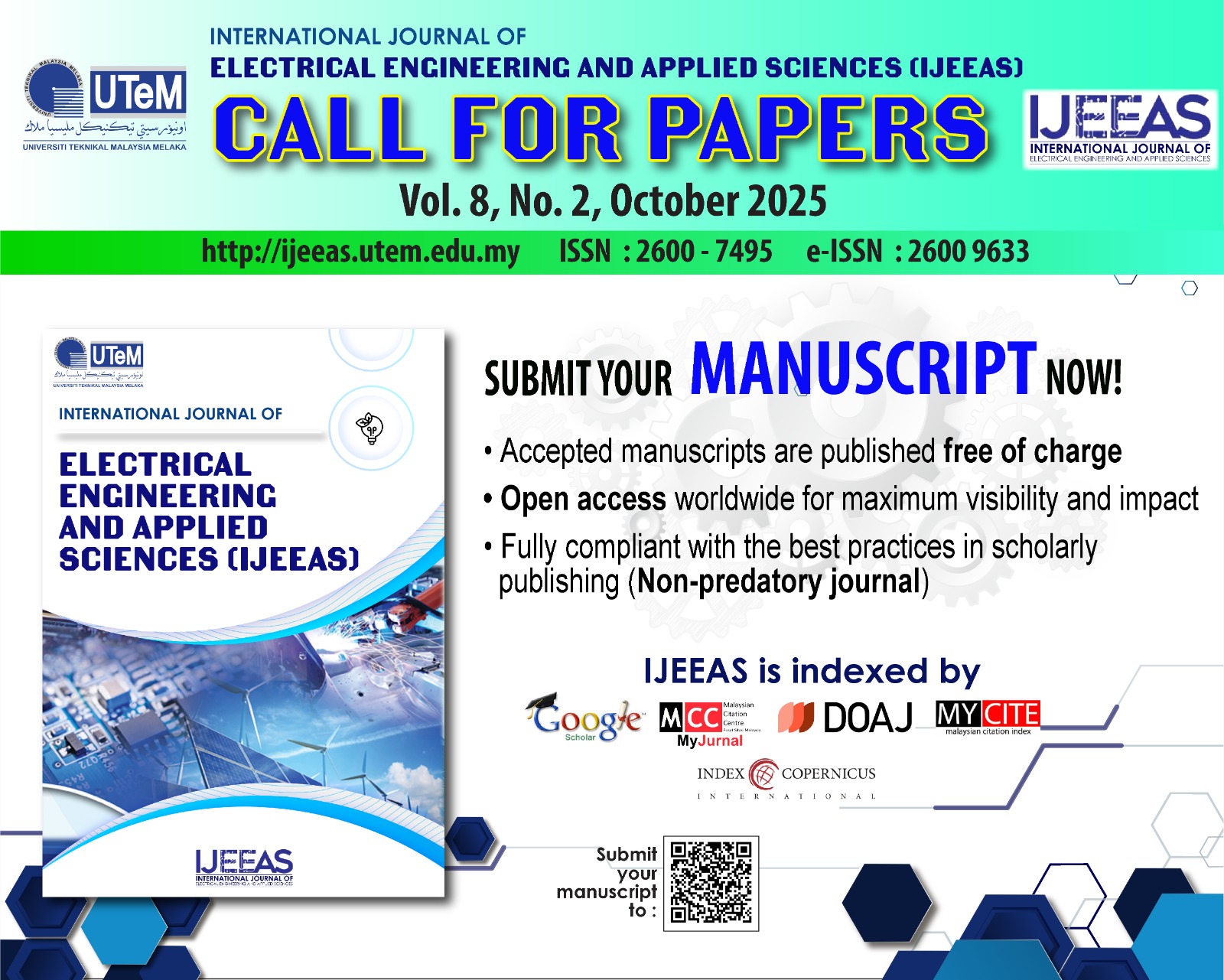Traffic Light Arrow Shape Recognition Using HOG Descriptors and SVM Classifiers
Keywords:
HOG Descriptor, Traffic light Arrow, SVM Classifier, Machine Learning, Image ProcessingAbstract
Autonomous intelligent vehicles technologies research have expanded and more effort have been made to implement a better safety features in a transportation sector. The lack of visibility of the drivers to perceive the signal from the traffic light is one of the risks for safety. Hence, by introducing the detection and recognition of the traffic light arrow shape using image processing to deliver a clear signal to a drivers and eliminate their difficulties to perceive either the round or arrow shape of the traffic light, this risk can be reduced. The current research has focuses on the condition of the traffic light and not indicating the direction of the arrow. In this paper, an algorithm for traffic light recognition for arrow symbols at daytime has been proposed using digital image processing and machine learning. In the machine learning technique, the Support Vector Machine (SVM) classifier has been used for the learning process and conduct a classification process as well. The HOG descriptor was extracted from the feature extraction process for the purpose of the training and classification process. As a result, this algorithm has achieved 98.52% accuracy, 1.48% error, 98.52% precision and 98.68% of recall through the testing process
Downloads
References
T. Bücher et al., “Image processing and behavior
planning for intelligent vehicles,” IEEE Trans. Ind. Electron., vol. 50, no. 1, pp. 62–75, Feb.
, doi: 10.1109/TIE.2002.807650.
C. Yu and Y. Bai, “A traffic light detection method,” Adv. Intell. Soft Comput., vol. 163 AISC, pp. 745–751, 2012, doi: 10.1007/978-3- 642-29458-7_104.
Z. Chen and X. Huang, “Accurate and Reliable Detection of Traffic Lights Using Multiclass Learning and Multiobject Tracking,” IEEE Intell. Transp. Syst. Mag., vol. 8, no. 4, pp. 28–42, Dec. 2016, doi: 10.1109/MITS.2016.2605381.
K. H. Lu, C. M. Wang, and S. Y. Chen, “Traffic light recognition,” J. Chinese Inst. Eng. Trans. Chinese Inst. Eng. A/Chung-kuo K. Ch’eng Hsuch K’an, vol. 31, no. 6, pp. 1069–1075, 2008, doi: 10.1080/02533839.2008.9671460.
S. Salti, A. Petrelli, F. Tombari, N. Fioraio, and
L. Di Stefano, “Traffic sign detection via interest region extraction,” Pattern Recognit., vol. 48, no. 4, pp. 1039–1049, Apr. 2015, doi: 10.1016/j.patcog.2014.05.017.
B. Advisor and L. Reznik, “Traffic Light Detection,” 2016.
Y. Y. Qin, W. Cui, Q. Li, W. Zhu, and X. G. Li, “Traffic Sign Image Enhancement in Low Light Environment,” in Procedia Computer Science, 2018, vol. 154, pp. 596–602, doi: 10.1016/j.procs.2019.06.094.
X. Shi, N. Zhao, and Y. Xia, “Detection and classification of traffic lights for automated setup of road surveillance systems,” Multimed. Tools Appl., vol. 75, no. 20, pp. 12547–12562, Oct. 2016, doi: 10.1007/s11042-014-2343-1.
M. Diaz-Cabrera, P. Cerri, and P. Medici, “Robust real-time traffic light detection and distance estimation using a single camera,” Expert Syst. Appl., vol. 42, no. 8, pp. 3911–3923, May 2015, doi: 10.1016/j.eswa.2014.12.037.
G. Mu, Z. Xinyu, L. Deyi, Z. Tianlei, and A. Lifeng, “Traffic light detection and recognition for autonomous vehicles,” J. China Univ. Posts Telecommun., vol. 22, no. 1, pp. 50–56, 2015, doi: 10.1016/S1005-8885(15)60624-0.
M. Haag and H.-H. Nagel, “Incremental recognition of traffic situations from video image sequences.” [Online]. Available: www.elsevier.com/locate/imavis.
P. H. Kassani and A. B. J. Teoh, “A new sparse model for traffic sign classification using soft histogram of oriented gradients,” Appl. Soft Comput. J., vol. 52, pp. 231–246, Mar. 2017, doi: 10.1016/j.asoc.2016.12.037.
Institute of Electrical and Electronics Engineers, 2018 International Conference on Information and Communications Technology (ICOIACT). .
S. Kaplan Berkaya, H. Gunduz, O. Ozsen, C. Akinlar, and S. Gunal, “On circular traffic sign detection and recognition,” Expert Syst. Appl., vol. 48, pp. 67–75, Apr. 2016, doi: 10.1016/j.eswa.2015.11.018.
X. Zhou, J. Yuan, H. Liu, X. Zhou, J. Yuan, and
H. Liu, “REAL-TIME TRAFFIC LIGHT RECOGNITION BASED ON C-HOG FEATURES,” Comput. Informatics, vol. 36, pp. 793–814, 2017, doi: 10.4149/cai.
Downloads
Published
How to Cite
Issue
Section
License
Authors who publish with this journal agree to the following terms:
- Authors retain copyright and grant the journal right of first publication with the work simultaneously licensed under a Creative Commons Attribution License that allows others to share the work with an acknowledgement of the work's authorship and initial publication in this journal.
- Authors are able to enter into separate, additional contractual arrangements for the non-exclusive distribution of the journal's published version of the work (e.g., post it to an institutional repository or publish it in a book), with an acknowledgement of its initial publication in this journal.
- Authors are permitted and encouraged to post their work online (e.g., in institutional repositories or on their website) prior to and during the submission process, as it can lead to productive exchanges, as well as earlier and greater citation of published work (See The Effect of Open Access).







